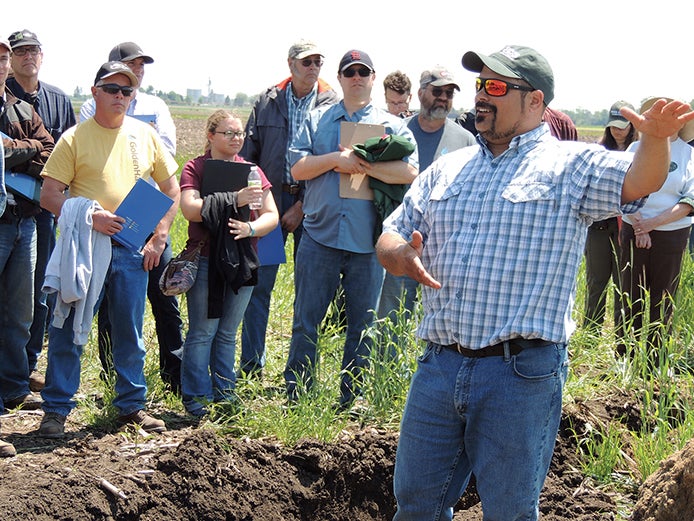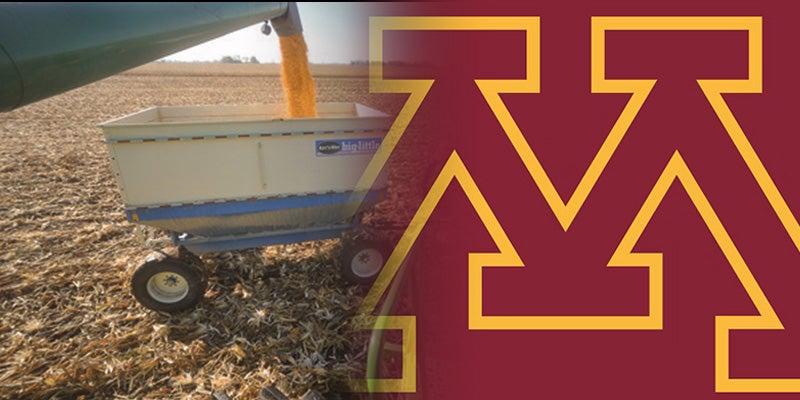Free classes offered on soil-health practices first-week of January
Published 8:32 am Wednesday, December 26, 2018

- Tom Cotter will be a presenter at the Cover Crops 101 presentation in January. Photo provided
Cover crops and other soil-health practices once again will be the focus this winter of numerous free workshops in the Austin area.
One workshop will offer two sessions on Jan. 3 at Riverland Community College in Austin as part of an event coordinated by Mower Soil & Water Conservation District in partnership with Riverland’s Center of Agricultural & Food Science Technology, Saddle Butte seed company, and Cedar River Watershed District.
People can attend a session of the “Cover Crops 101” class from 2-4:30 p.m. or 6-8:30 p.m. at Riverland’s west campus building, 1900 8th Ave. NW, in the college’s Center for Agricultural and Food Science Technology, Room A115 (parking in the north lot with entry via Door W3).
Mower County farmer Tom Cotter – the county’s 2016 Outstanding Conservationist of the Year and a 2017 Cover Crop Champion – will lead each session with TJ Kartes of Saddle Butte and Steve Lawler, a soil scientist for Mower SWCD.
“Farmers want quality information about cover crops, especially that is specific to our area,” Cotter said. “This class is the first step to show methods that have been effective for us.”
At the sessions, Cotter and Kartes will discuss cover crop seed origination, species and species mixes, step-by-step production, and value of cover crop technology, among other topics.
Cover crops are a second, unharvested crop planted in coordination with regular cash crops, such as corn and soybeans. They are viewed as tools to keep soil in place, bolster soil health, improve water quality, and reduce pollution from ag activities. Popular cover crops include cereal rye, crimson clover and oilseed radish.
Cotter, a fourth-generation farmer, raises corn, soybeans, peas, sweet corn and alfalfa and also runs a cow/calf beef operation on his Austin Township farm, which has been certified through the state’s Ag Certainty water-quality program. In recent years, Cotter has given dozens of presentations on cover crops and soil health, including at state and national conferences.
Kartes is a Blooming Prairie native who has worked with producers in a five-state area with cover crops since 2009. Starting in 1987, Kartes helped an uncle for nearly two decades with a farming operation in the Blooming Prairie area, where his uncle transitioned from ridge till to no-till to no-till with cover crops to adding a third crop to his rotation.
“That experience got me into conservation-minded farming practices and thinking of ways to implement ideas that help protect land and water resources,” Kartes said.
Lawler just completed the first year of a three-year soil health research project using dozens of field plots in Mower County. He is working in collaboration with the University of Minnesota, University of Wisconsin-River Falls, The Hormel Foundation and Riverland Community College, where there is a soils laboratory.
In early 2019, Cotter will be part of a farm panel at workshops in Albert Lea that will cover soil building on rental farm property. Land Stewardship Project, a nonprofit based in Lewiston, is organizing the workshops, which are set for Jan. 17 and Feb. 14 at Wedgewood Cove in Albert Lea. More information is available at www.landstewardshipproject.org.
On Jan. 23, Wedgwood Cover also will host the Fifth annual Soil Health Winter Workshop organized by the Freeborn Area Soil Health Team in coordination with the Blue Earth Watershed Civic Engagement Team. The free event, which will include lunch, will feature several speakers, including Ann Journey, soil health coordinator for Minnesota NRCS, and Jerry Hatfield, director of USDA-ARS National Laboratory for Agriculture and Environment.
The Sustainable Agriculture Research and Education program says cover crops offer economic and ecological benefits:
• Reducing fertilizer costs;
• Improving crop yields by enhancing soil health;
• Reducing the need for herbicides and pesticides;
• Preventing soil erosion;
• Conserving soil moisture;
• Protecting water quality; and
• Helping to safeguard personal health.




